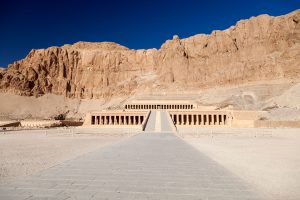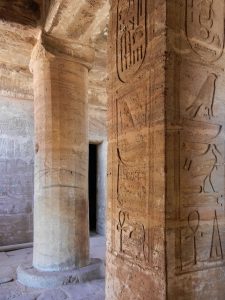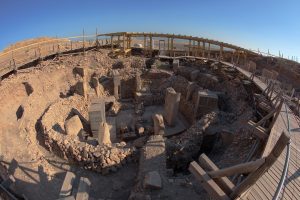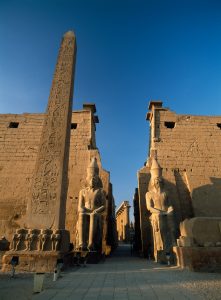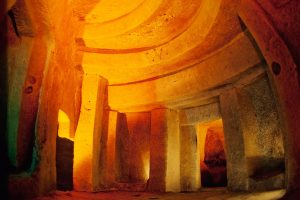Many of the most stunning ancient temples are still standing today from the early days of humanity. Given the importance of religion in ancient civilizations, it’s not unexpected that these spiritual locations were constructed using cutting-edge architectural advances and are large in scale.
Many of these sites are still shrouded in mystery regarding their former uses and creators, whereas others are extensively documented and have been studied for over a century. Fortunately for architecture and history aficionados, some of the world’s oldest temples can still be visited today.
[adinserter block=”6″]
Temple of Hatshepsut
Egypt. Around 1,470 B.C., it was built. This ancient archaeological shrine in Egypt, also known as Djoser-Djeseru, was created by Pharaoh Hatshepsut’s royal architect, Senenmut, and is distinguished by its long colonnade and several terraces. Although many of the original statues and artefacts at the site have been stolen or destroyed over the years, the relief representing the divine birth of a female pharaoh is still in place. In the seventh century A.D., a monastery was built on top of the temple. The first large-scale excavation of the site occurred in the 1890s, and Egyptologist Herbert E. Winlock of the Metropolitan Museum of Art directed excavation and restoration of the site from 1923 to 1931.
[adinserter block=”6″]
Temple of Amada
Nubia. Built throughout the 18th and 19th dynasties (Between 1,550 and 1,189 B.C.) Originally built on the east bank of the Nile, this temple, Nubia’s oldest, was relocated in the 1960s and 1970s to a new, higher location on Lake Nasser to protect it from inundation. Christiane Desroches Noblecourt, a French Egyptologist, oversaw the endeavour, which included a number of Nubian temples and historic monuments. The most prominent elements of the temple are a well-preserved relief and two significant inscriptions detailing the military achievements of the pharaohs who erected the temple, Tuthmosis III and his son Amenhotep II.
Göbekli Tepe
Turkey. Built around 10,000 B.C. It is thought that prehistoric humans built a spectacular stone temple on a hilltop in southeastern Turkey 6,000 years before Stonehenge. The site, known as Göbekli Tepe, was previously ignored by anthropologists who thought it was a mediaeval tomb. However, in 2008, German archaeologist Klaus Schmidt discovered that Göbekli Tepe is, in fact, the world’s oldest known temple. For unexplained reasons, the site was purposely buried circa 8,000 B.C., allowing the structures to be preserved for future discovery and study.
[adinserter block=”9″]
Luxor Temple
Egypt. Between 1,100 and 1,600 B.C., it was built. This Ancient Egyptian temple on the Nile’s east bank has been a place of devotion for approximately 3,500 years. The site is famous for its sphinx avenue and the towering Pylon of Ramses II. The temple was built throughout the reigns of numerous pharaohs, notably Amenhotep III, Ramses II, and Tutankhamen, who is credited with much of its embellishment. The Luxor Temple was dedicated to Amun, the monarch of the gods, as well as the mother goddess Mut and Khonsu, the deity of the moon and time, and, was the largest and most important site in ancient Egypt.
Hypogeum of Ħal-Saflieni
Malta is the location. Around 2,500 B.C., it was built. The Hypogeum in Malta, unlike the other temples on our list, was built underground. This massive subterranean labyrinth, a UNESCO World Heritage Site, features false windows, trilithon doors, ornate red ocher murals, and carved-stone ceiling embellishments that simulate corbeled masonry. The Hypogeum was uncovered during construction in 1902 and was originally excavated in 1903. The site was closed for conservation between 1990 and 2000, and while it has reopened to the public, only 80 people are permitted each day.
[adinserter block=”10″]


